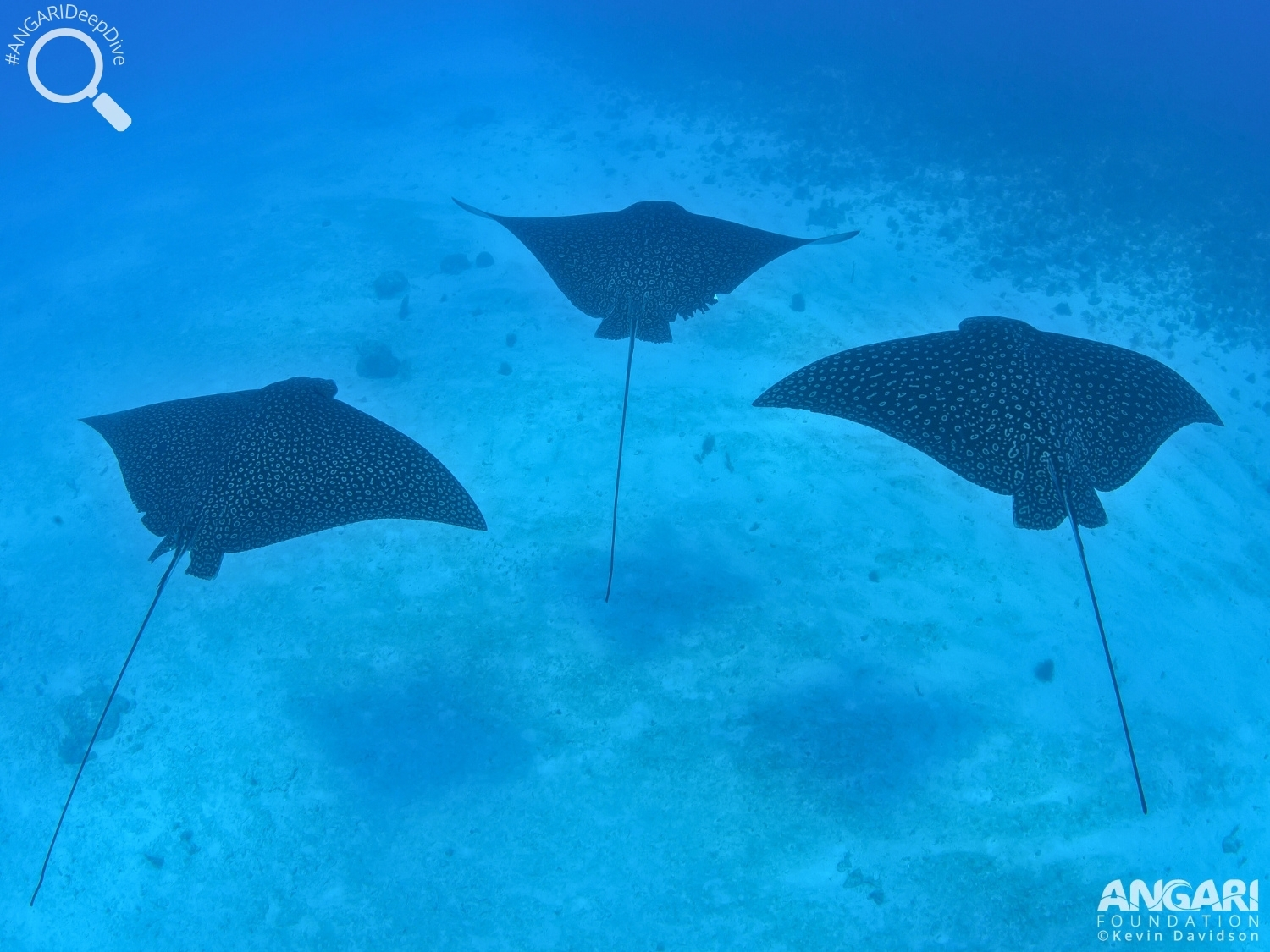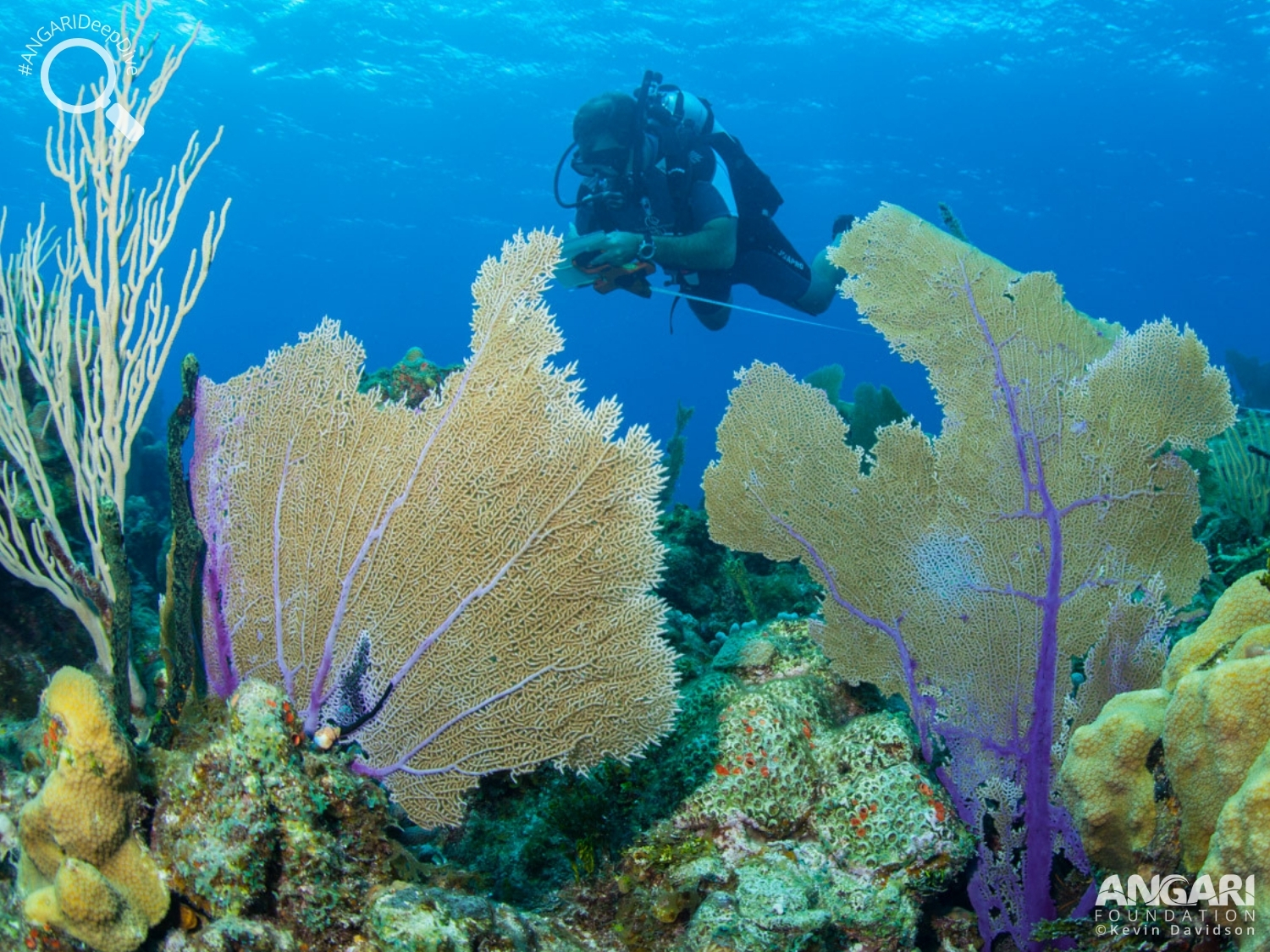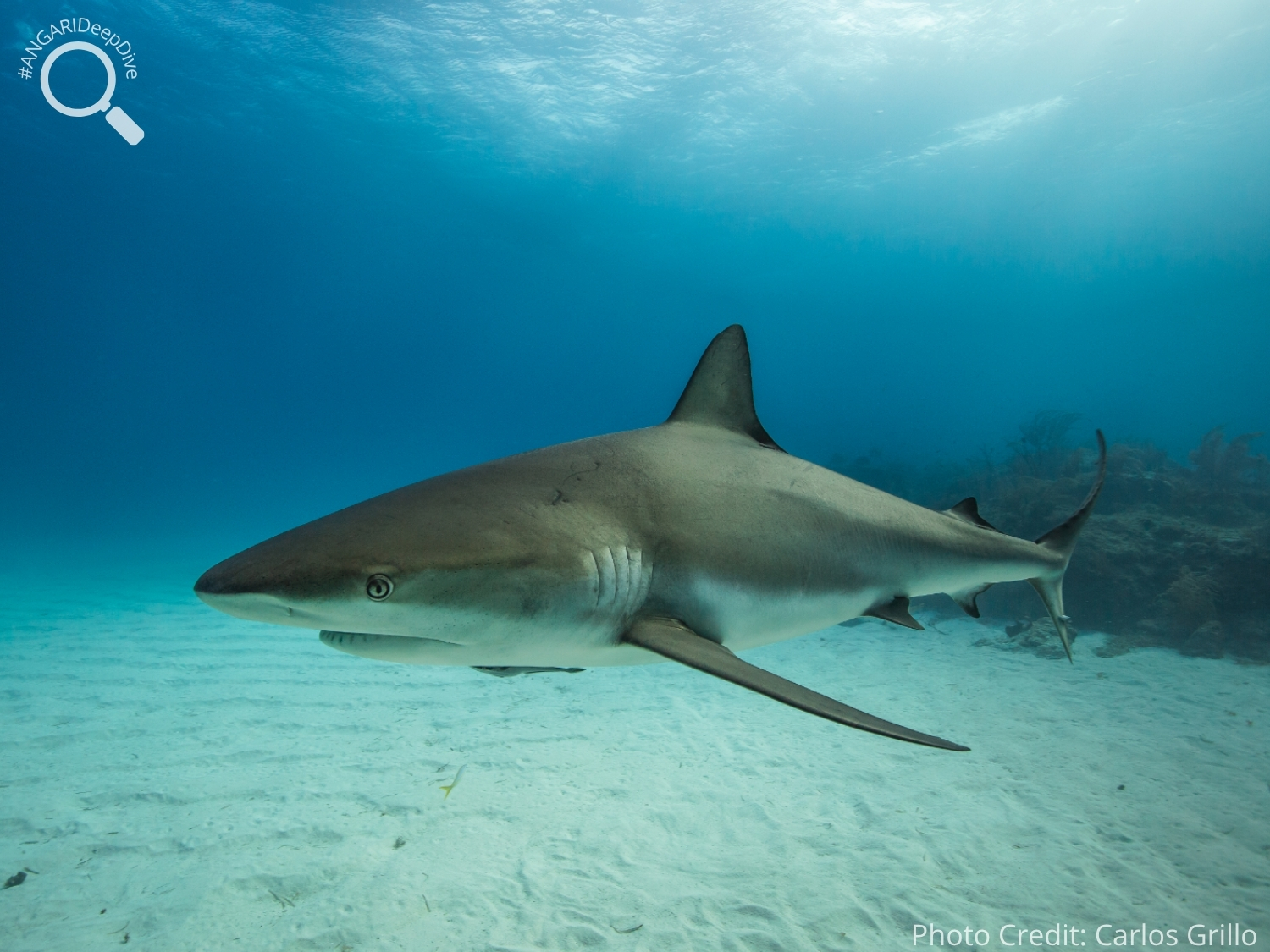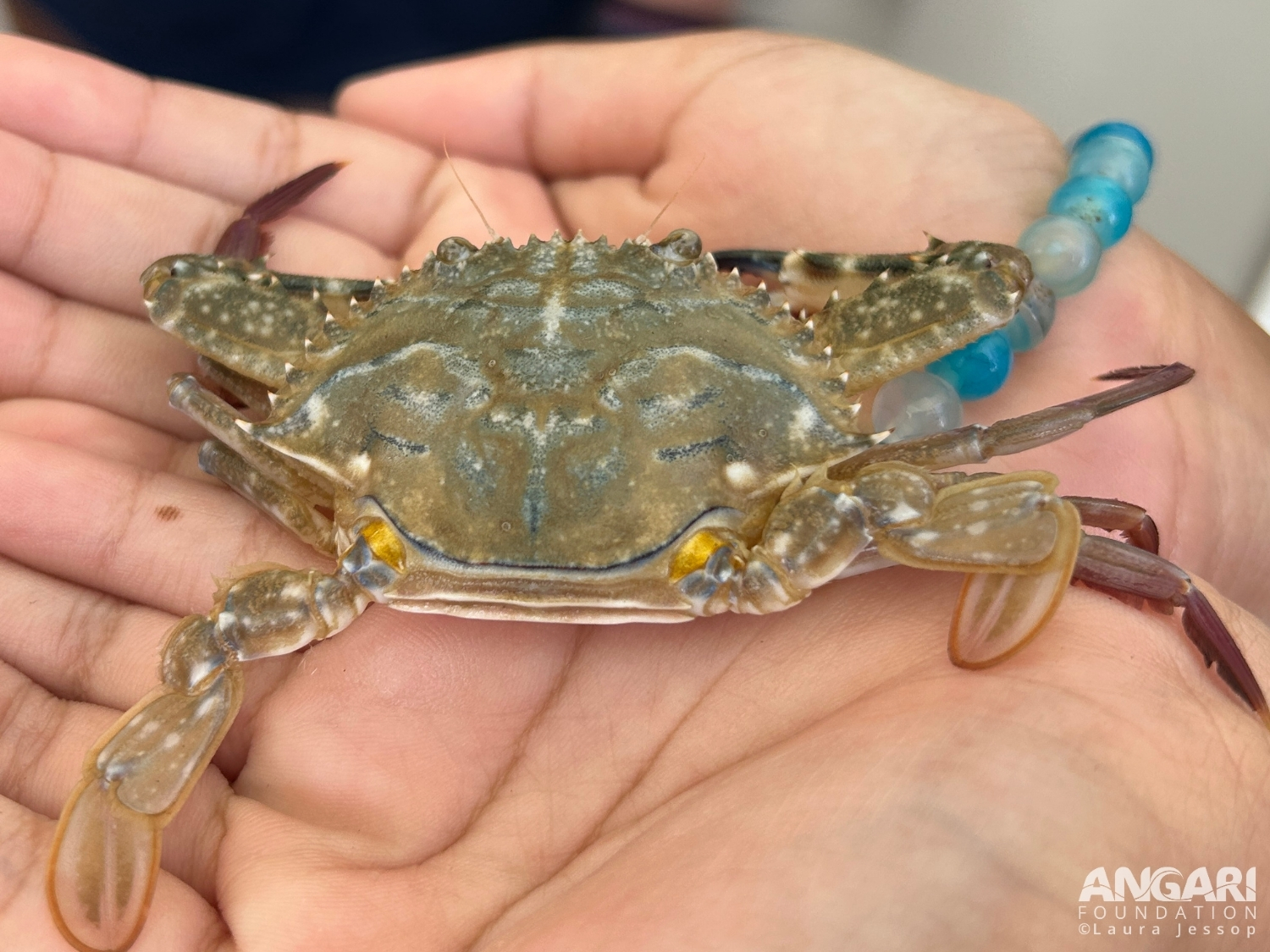Common sea fans are commonly found on coral reefs and can be identified by their purple tissue.

Spotted Eagle Ray (Aetobatus narinari)
The spotted eagle ray (Aetobatus narinari) is a species of ray that is decorated with white spots and marks across their dorsal side. They are very identifiable by their unique snout that is perfectly adapted to help with locating and digging up prey. Read on for more fun facts about the spotted eagle ray.
#1: Is the spotted eagle ray located across the globe?
Spotted eagle rays can be found in warm temperate and tropical waters throughout the world. You are able to spot this species throughout and at various locations within the Atlantic Ocean and Pacific Ocean.

#2: Where does the spotted eagle ray hang out?
Spotted eagle rays are active swimmers and you won’t find them resting on the ocean floor. They spend the majority of their time traveling in the open ocean but also can be found in and around coastal environments such as coral reefs, estuaries and bays.

#3: The spotted eagle ray isn’t small!
The spotted eagle ray’s wingspan can be up to 10ft (3m) wide. This makes it one of the largest species of eagle ray with only manta rays being larger than them.

#4: What is a group of spotted eagle rays called?
Spotted eagle rays are elegant and graceful swimmers. Several spotted eagle rays will group together to form a large school when swimming in open water, where they will travel great distances together. A group of rays is called a ‘fever of rays’.

#5: Spotted eagle rays fly!
Spotted eagle rays can leap their entire bodies out of the water while swimming close to the surface. Scientists are unsure why they do this but believe that it is in order to evade pursuit or remove parasites.

#6: Does the spotted eagle ray have a beak?
When looking at a spotted eagle ray, you’ll see that their nose looks similar to a bird’s beak—which is how the spotted eagle ray got its name. Their unique-looking snouts are used to investigate and dig around in the sand for prey including clams, oysters, sea urchins and shrimp.

#7: How does the spotted eagle ray eat?
The spotted eagle rays does not have typical teeth. They have a single row of wide and flat teeth which forms a single hardened dental plate. They use these plates to crush and grind mollusc shells.

#8: What hunts the spotted eagle ray?
Due to its large size the spotted eagle ray doesn’t have too many predators. However, the great hammerhead and silvertip shark seek out and will prey upon them.

#9: Spotted eagle rays can get defensive.
Eagle Rays have a very long thin tail that can contain up to 7 barbed spines at the base. These spines are venomous and are used by the ray as a defense mechanism if they feel threatened.

Spotted eagle ray populations are declining and they are currently listed as an endangered species by the IUCN. Factors including habitat degradation, commercial fisheries bycatch and fishing for aquariums are contributing to these declining global populations. Conservation and monitoring efforts are critical to prevent further declines and are essential to protect them. Continue to do your part by fishing sustainably and protecting your local environment.
Additional Spotted Eagle Ray Resources:
1. Spotted Eagle Ray 3D Model
2. Aetobatus narinari – Florida Museum
3. Spotted Eagle Ray Art Lesson and Coloring Sheet – Manatee Lagoon



